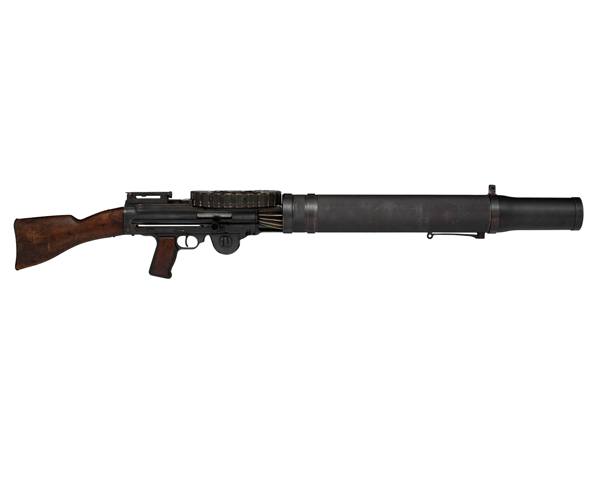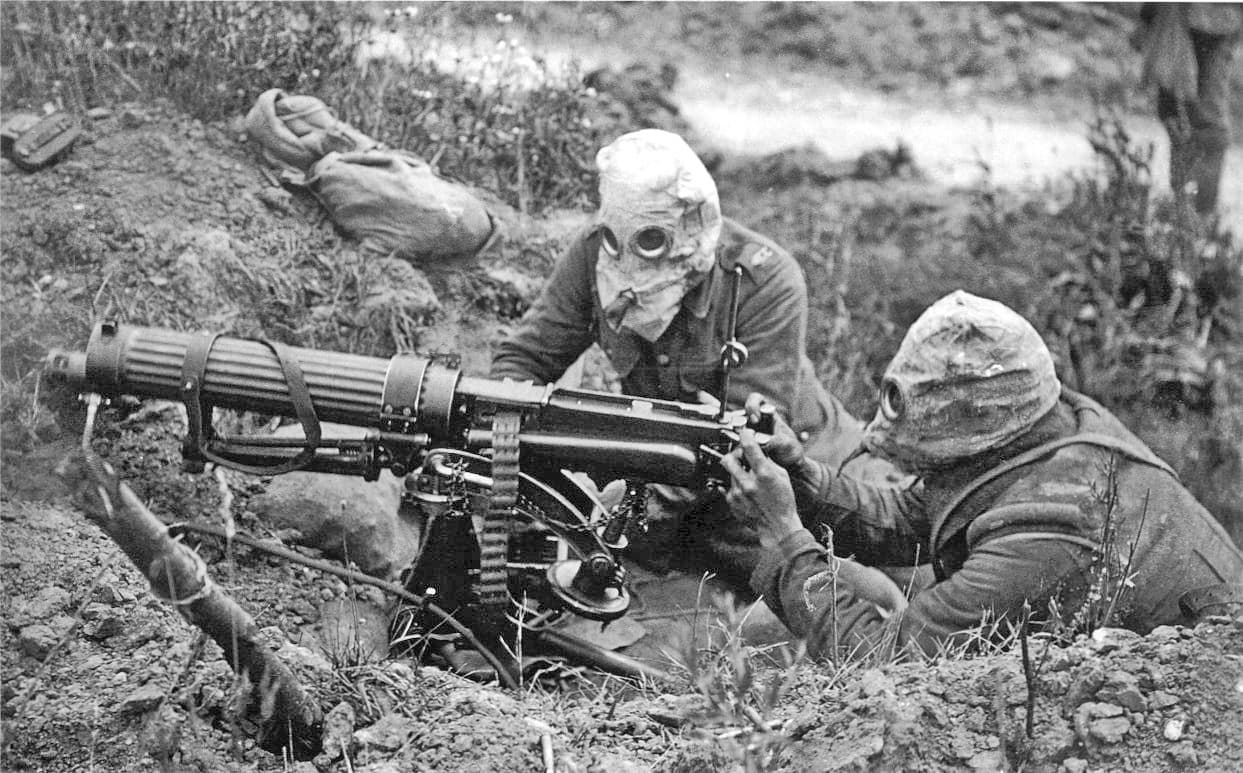Depending on the gunner and conditions, a barrel modification could be needed as often as every 200 to 250 rounds. When the hot barrel was eliminated, it was reserved until it was cool enough to use once again. Machine-gun teams would have as numerous as 6 spare barrels on hand.
Driving through a just recently secured location in Belgium, the sharp-eyed Liniewski spotted the deserted weapon in a field. Liniewski then did what any not being watched GI would have performed in that position; he stopped his truck and took the chance to snag a great memento for the folks back house. As a support soldier, Liniewski was not familiar enough with weapons to disassemble his MG-42, so he held on to it for a while up until he found a camp where German detainees of war were being held.
The weapon remained in the Liniewski family up until 2016 when his boy Marty contributed the weapon to the Museum. In spite of its tendency to get too hot, the MG-42 was an excellent weapon that was light-years of ahead of the US equivalent, the Browning M-1919A4 maker gun. Germany produced roughly 400,000 MG-42s during the war, a few of which are still in active service.

Taken together, all these weapons gave the Red Army a more practical range of support weapons, much better able to challenge the Germans for fire superiority on the battleground. Fully detailed, this research study discusses the innovation and the tactics of these gatling gun. Kept in mind authority Chris Mc, Nab sets out how these device guns were distributed and tactically applied and provides many examples of the weapons in action, from attack teams on the streets of Stalingrad to tank crews struggling for survival at Kursk.
Not known Details About Weaponry In World War I
Illustrated with high-quality pictures and specially commissioned artwork, this is a deep analysis of these necessary tools of warfare within the Soviet forces.
Taken together, all these weapons gave the Red Army a more practical variety of support weapons, better able to challenge the Germans for fire superiority on the battlefield. Completely detailed, this research study explains the technology and the techniques of these maker guns. Noted authority Chris Mc, Nab sets out how these maker weapons were dispersed and tactically applied and supplies various examples of the weapons in action, from assault teams on the streets of Stalingrad to tank teams struggling for survival at Kursk.
Illustrated with top quality photos and specifically commissioned art work, this is a deep analysis of these vital tools of warfare within the Soviet forces.
The maker weapon business, commanded by a captain, had an assigned strength of 6 commissioned officers and 172 employed males, and carried 16 weapons, four of which were spares. Within the company there were 3 platoons and a head office section. A very first lieutenant led the very first platoon, while second lieutenants led squadrons two and three.
Our How The Machine Gun Revolutionized World War 1 Combat Ideas


Within each section were 2 gun teams, each with one weapon and nine guys, led by corporals. The weapon team had one combat cart, pulled by a mule, to transfer its weapon and ammunition as close to the firing position as enemy fire enabled. From there the teams moved the guns and ammo forward by hand.
It had just two companies, identical to the other maker weapon business in terms of personnel and weapons. Each gun team utilized an unique motor automobile to transfer its personnel, weapon and equipment.
In this function the weapons were put 300 to 1000 meters to the rear of the front line. When they used their weapons in that fashion, the machine weapon officers typically encountered opposition from the rifle company commanders, who chose to have the weapons farther forward, fearing that their infantrymen would be at risk of roaming low rounds as they advanced under the overhead gatling gun fire.
Furthermore, they quickly found that the device guns were high top priority targets for opponent fire, and that it was advantageous to have the weapons at some distance from the infantry positions. Since opponent maker weapons positioned the greatest hazard to the attacking soldiers, the gatling gun teams strove to find the enemy guns and to concentrate their fire upon them.
Top Guidelines Of Trench Guns Of World War I
A percentage of the weapons was kept back as a reserve under command of the gatling gun officer. 6Machine weapon tactical teaching determined that in the defense the Hotchkiss weapons must only rarely be situated within 100 lawns of the front line and that a minimum of two-thirds of the weapons need to be echeloned back through the entire defensive position, situated so that nearby guns would be equally supporting.

7 To find other functions on the check out our THE DOUGHBOY CENTER wishes to continuously expand this function. Additions and discuss these pages may be directed to:.
I was impaled on this. My only worry was that he would press the trigger which would have made a hell of a mess. In the meantime, my sergeant who was near he saw me; can be found in close; shot the fellow and after that hoisted me, with the aid of another man, off the bayonet.
A bayonet wound straight it goes in it harms and the withdrawal is most likely further suffering than the 'putting in' since the 'putting in' is rapid. Another type of weapon was the trench club.